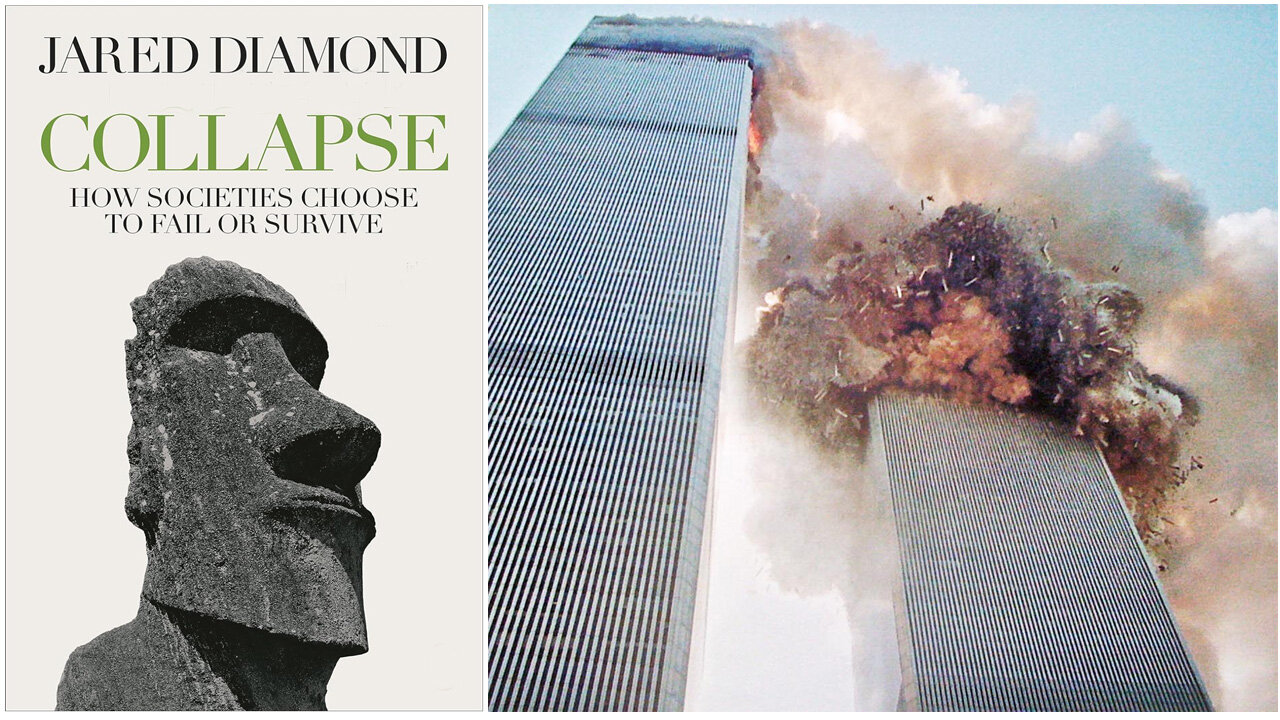Premium Only Content

'Collapse' (1984) by Jared Diamond
'Collapse: How Societies Choose to Fail or Succeed' examines the factors that have led to the decline or collapse of various societies throughout history. The book combines historical case studies, ecological analysis, and lessons for modern society. Diamond identifies several key factors that contribute to societal collapse, including environmental degradation, climate change, resource depletion, population pressures, and political or social instability.
Key Themes and Insights: Historical Case Studies: Collapsed Societies: Diamond analyzes societies like the Easter Islanders, Norse Greenlanders, and the Maya. He attributes their decline to deforestation, overuse of resources, and failure to adapt to changing environmental conditions.
Resilient Societies: He contrasts these with societies like Tikopia and Japan, which adapted sustainable practices to avoid collapse.
Environmental Factors: Diamond emphasizes the role of ecological mismanagement in societal failures, such as deforestation, soil erosion, and water management issues.
Human Decision-Making: Societal outcomes often depend on how leaders and communities recognize and respond to challenges. He notes that some societies ignore warning signs or prioritize short-term gains over long-term sustainability.
Modern Parallels: Diamond draws comparisons between historical collapses and contemporary global challenges, including climate change, resource depletion, and economic inequality.
He argues that the lessons of history are vital for addressing current crises, emphasizing the importance of sustainability, responsible governance, and global cooperation.
Five-Point Framework: Diamond outlines five key factors influencing societal outcomes:
Environmental damage
Climate change
Hostile neighbors
Friendly trade partners
Societal responses to challenges
Conclusion: Diamond stresses that collapse is not inevitable; societies can choose to succeed or fail based on their decisions and adaptability. By learning from history, he argues that humanity can avoid repeating the mistakes of the past.
The book is both a cautionary tale and a call to action, urging readers to consider the long-term consequences of their actions for future generations.
-
 LIVE
LIVE
Tate Speech by Andrew Tate
7 hours agoEMERGENCY MEETING EPISODE 109 - KNIFE CRIME ON MARS
12,288 watching -
 1:00:56
1:00:56
VINCE
3 hours agoPresident Trump The Businessman Strikes Again | Episode 22 - 04/15/25
67.6K100 -
 LIVE
LIVE
LFA TV
13 hours agoLFA TV - ALL DAY LIVE STREAM 4/15/25
4,001 watching -
 LIVE
LIVE
Rethinking the Dollar
13 minutes agoRay Dalio Warns: “This Is Bigger Than a Recession” | Morning Check-In
154 watching -
 54:30
54:30
BonginoReport
4 hours agoLeft Demands Return of MS-13 Gang Member - BR Early Edition w/ Evita (Ep.182) - 04/15/2025
94.9K83 -
 2:11:12
2:11:12
Matt Kohrs
13 hours agoMASSIVE Swings Incoming! || The MK Show
26.1K1 -
 LIVE
LIVE
Badlands Media
5 hours agoBadlands Daily: April 15, 2025
5,909 watching -
 LIVE
LIVE
The Big Mig™
3 hours agoFree Tina Peters Now! w/ Steve Stern
5,026 watching -
 LIVE
LIVE
Wendy Bell Radio
6 hours agoLiberals Love Criminal Illegals More Than They Love America
9,053 watching -
 1:15:29
1:15:29
Dear America
15 hours agoAustin Metcalf Killer RELEASED, JD Vance Fumbles CFP Trophy + CNN Gets Bullied In The Oval Office!
34.9K18